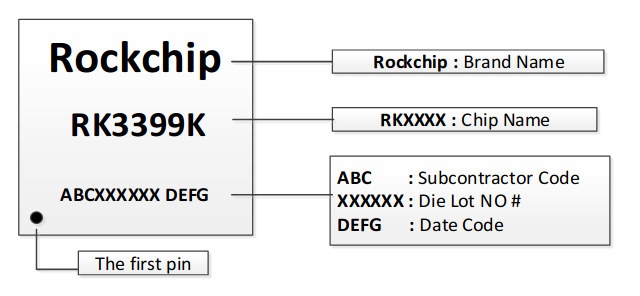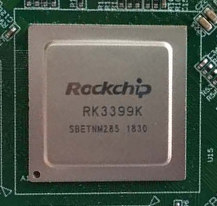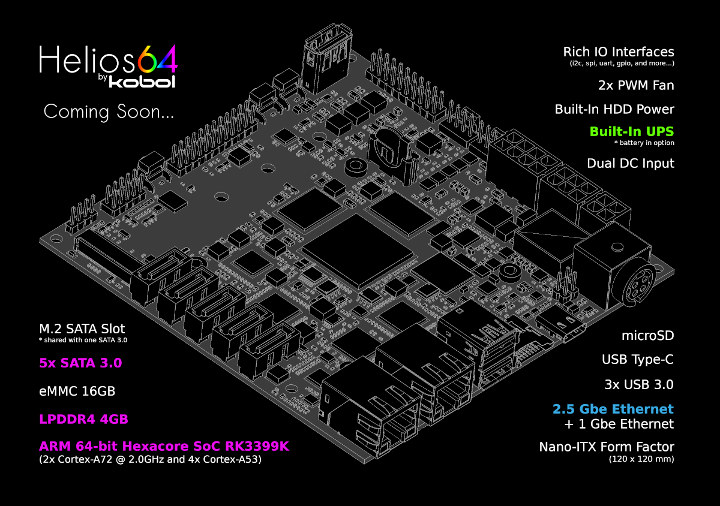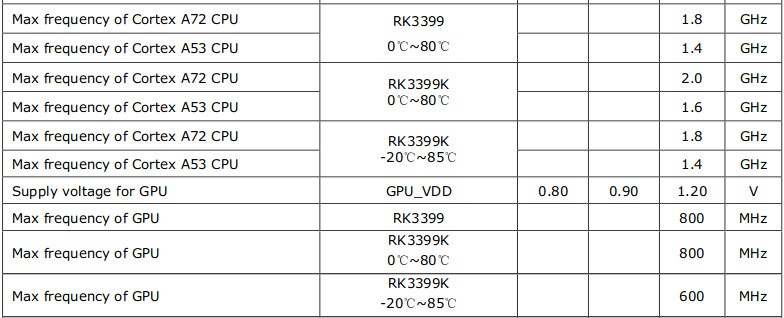First unveiled in 2016, Rockchip RK3399 hexa-core processor is still widely used in development boards, Android mini PCs and Chromebooks. But today, I’ve come across another variant.
Rockchip RK3399K has exactly the same features but either supports higher clock CPU clocks (Cortex-A72 @ 2.0 GHz, Cortex-A53 @ 1.6 GHz), or wider temperature range between -20°C and 85°C with lower clock speeds for the CPU (A72: 1.8 GHz, A53: 1.4 GHz) and the GPU (600 MHz)
I think I’ve read stories about Rockchip RK3399 being clocked at 2.0 GHz with proper cooling, but it may not be reliable on all boards. RK3399K should fix that.
Rockchip actually updated its datasheet on the 29th of May, but I only found out about it today. Everything else looks the same, and you’ll be able to find out whether your device uses RK3399 or RK3399K by looking at the marking on the chip.

 That’s all info there’s in the datasheet about RK3399K. A web search does not return any board or another hardware platform (in English) based on the new processor.
That’s all info there’s in the datasheet about RK3399K. A web search does not return any board or another hardware platform (in English) based on the new processor.
Instead, I learned about the new processor via Kobol. You may remember Kobol Helio4 DIY NAS powered by Marvell ARMADA 388 dual-core processor, and the company is now working on Helio64 nano-ITX board featuring Rockchip RK3399K processor @ 2.0 GHz with some interesting features.
Preliminary specs as follows:
- SoC – Rockchip RK3399K hexa-core processor with 2x Arm Cortex-A72 cores @ 2.0 GHz, 4x Cortex-A53 cores @ 1.6 GHz
- System Memory – 4GB LPDDR4
- Storage – 16GB eMMC flash, 5x SATA 3.0, 1x M.2 SATA slot (shared with one SATA 3.0 port), MicroSD port
- Connectivity – 1x 2.5GbE port, 1x Gigabit Ethernet port
- USB – 3x USB 3.0 ports, 1x USB type-C port
- Expansion – Headers for I2C, UART, SPI, GPIOs…
- Misc – 2x PWM fan headers, RTC with backup battery, buzzer
- Power Supply – Dual DC inputs, built-in UPS support with optional battery.
- Dimensions – 120 x 120 mm (nano-ITX form factor)
 It will take a while before the board becomes available however, as I’ve been told the PVT (Production Validation Test) samples are expected sometimes in December meaning the board and/or NAS Kit will likely be available in the first part of 2020.
It will take a while before the board becomes available however, as I’ve been told the PVT (Production Validation Test) samples are expected sometimes in December meaning the board and/or NAS Kit will likely be available in the first part of 2020.
I could also notice an industrial computer and a system-on-module based on Rockchip RK3399K on some Chinese websites. Both products were apparently announced last year (2018), so the upgraded processor has been available for some time, but Rockchip may not have actively promoted this version until recently.

Jean-Luc started CNX Software in 2010 as a part-time endeavor, before quitting his job as a software engineering manager, and starting to write daily news, and reviews full time later in 2011.
Support CNX Software! Donate via cryptocurrencies, become a Patron on Patreon, or purchase goods on Amazon or Aliexpress





